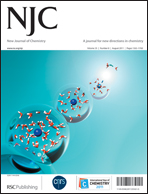Lanthanide ions provide a classic example of the distortion of speciation that sometimes occurs during the electrospray ionization (ESI) process. Under normal conditions, M3+ ions are not observed as such from aqueous solution; rather, they appear as charge-reduced species such as [M(OH)]2+ or even [MO]+ ions. However, source conditions can be tuned to a “cold-flooding” mode such that [M(H2O)n]3+ ions can be readily obtained, thus providing spectra that are much more representative of the solution speciation. Examination of heavily hydrated trications by MS/MS enables the step-by-step progression of a small droplet to a solvated ion and eventually to a solvent-free ion to be examined in detail, and the point at which charge reduction occurs can be established. We find a strong correlation between the solution acidity of each lanthanide ion and the number of water molecules at which charge reduction occurs under MS/MS conditions. Examination of previously published data on a range of dications supports this conclusion. So not only can ESI-MS provide an accurate picture of the solution speciation, it can also provide insights into chemical behavior in solution.

You have access to this article
 Please wait while we load your content...
Something went wrong. Try again?
Please wait while we load your content...
Something went wrong. Try again?


 Please wait while we load your content...
Please wait while we load your content...